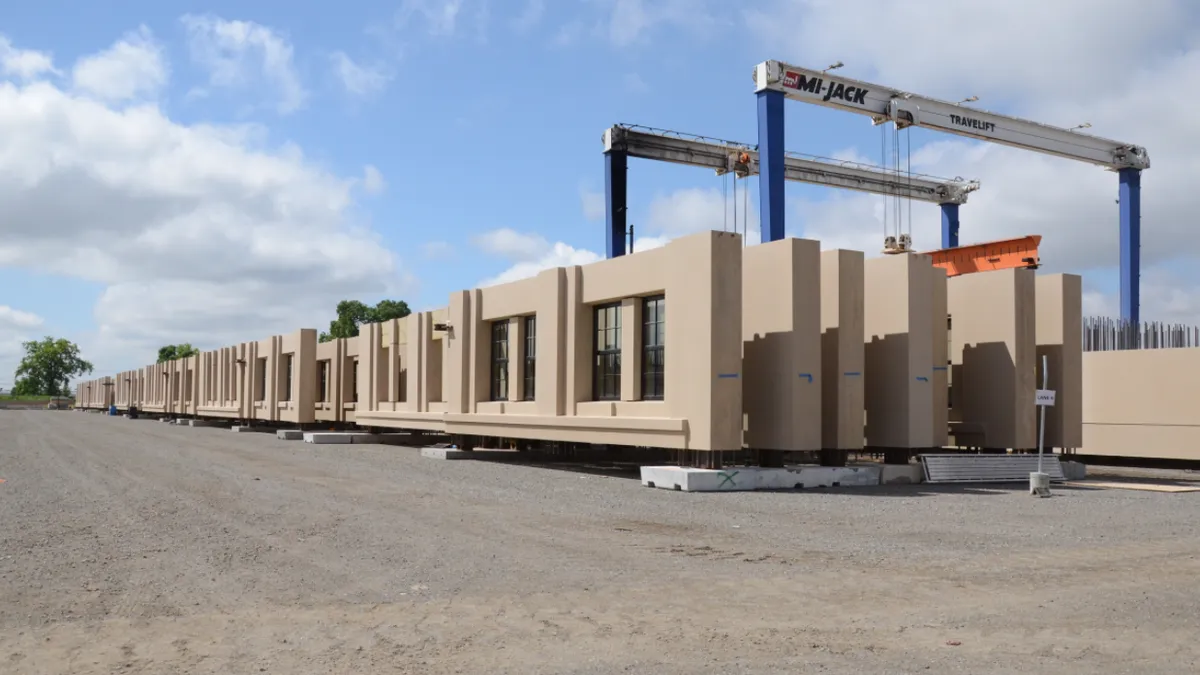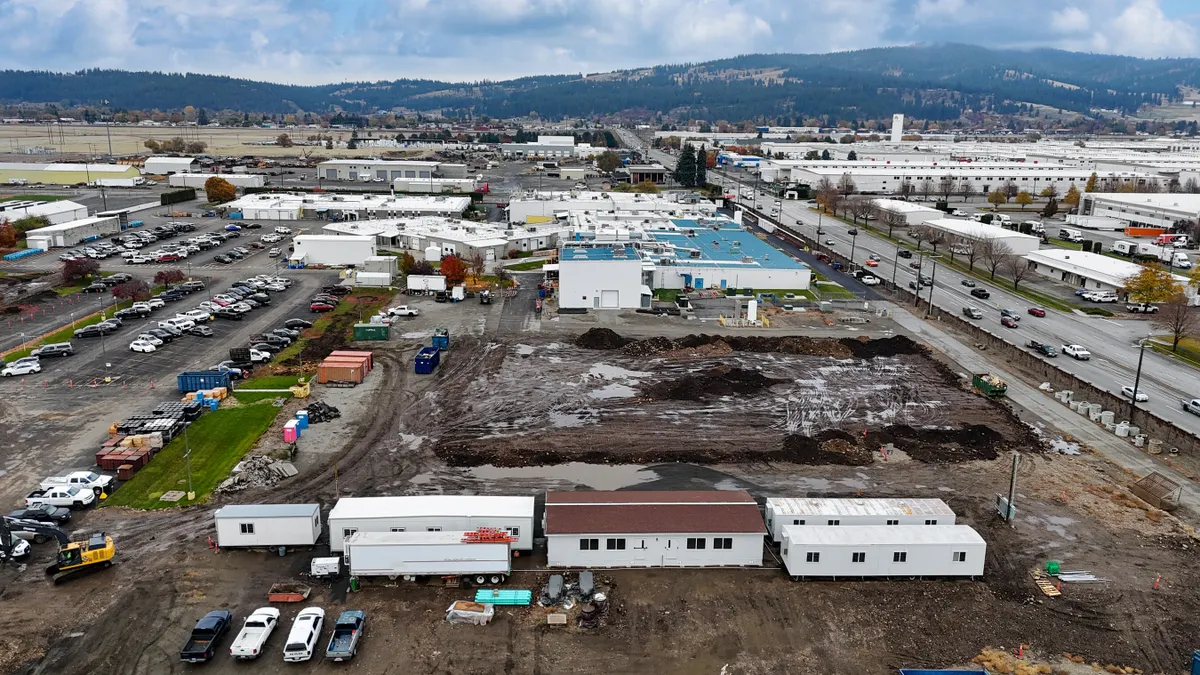Value engineering, the process of evaluating a project for potential changes that could save money without compromising on performance, typically happens for a few reasons in the realm of traditional construction. The project could be over budget, or the general contractor and owner might simply want to reduce costs or increase efficiency.
For example, the general contractor might go back to the subcontractor that will be installing the doors and ask that it revisit the hardware package and find some less expensive, similar options.
Or a mechanical subcontractor with decades of expertise and knowledge about the practicality and functionality of certain systems in various types of project environments might be able to suggest alternatives to what was specified in the construction documents that, in the long run, make for a better choice.
It’s all about optimizing every aspect of the project.
And, depending on the trade, value engineering efforts can be launched at several points during the project, even after building has begun.
For modular and prefabricated construction, the goals of value engineering are the same as for site-built projects, but when that process takes place is where the biggest difference lies.
“It is not about finding cost savings at some point too late in a project," said Greg Otto, project executive for prefabricated solutions at California prefabricated building systems firm Clark Pacific. "It must start early, at the beginning of the project, and be seen as an additive process, driving value creation.”
Evaluate lead times
So how does the value or value management look for a modular project?
Similar to traditionally built projects, there is an evaluation of lead times on materials and design of systems, spaces and components, with an eye toward lowering costs and increasing efficiency, according to Timothy Barry, director of operations in New York for Consigli Construction Co.
For example, on the large-scale, multivolumetric modular residence hall projects that Consigli has built, Barry said, the firm analyzed floor plans, rooms and corridor layouts for repetitive production in the factory. This not only increased production but also reduced waste and drove down costs.
It’s all part of the Design for Manufacture and Assembly (DFMA) process, said Josh Mensinger, vice president at ModularDesign+ in Dallas. The company is a strategic partner of international architectural firm CannonDesign.
DFMA is different, he said, from a situation in which the general contractor pulls all the subs together and decides they’re going to use prefabrication to deliver their scopes of work.
“When you do prefabrication and modular construction that way,” Mensinger said, “you don’t save on any costs whatsoever. That’s why modular is more expensive. You’re paying for the subcontractors’ time … but also for the logistics of shipping the prefabricated components to the project.”
Unlike the holistic DFMA approach, he said, which sees participants working toward the greatest efficiency, those deciding on modular or prefabrication after the fact are just trying to take advantage of time, not the manufacturing savings that they should be trying to achieve.
With the knowledge and experience of DFMA, he said, ModularDesign+ is able to sometimes advise designers on specifications that can bring more value. “They’re not familiar with potential manufacturing or assembling savings.”
For example, the company buys many materials at discounted bulk rates. So, if an architect has specified a different material for the project, ModularDesign+ can offer savings that the project would not be able to achieve otherwise, which puts it into the category of value engineering.
Start early
So just how early in the process can modular project teams begin the value engineering process? There really is no such thing as too early when it comes to identifying areas of potential savings. And given the nature of modular construction, much of what can be changed is actually limited to the design phase.
As the design process goes from schematic into the development phase, Barry said, the selection of equipment and material begins, and, then, the modular manufacturer or prefabrication facility will order the components it needs and start fabrication. Ideally, out in the field, excavation and foundation construction begins at about the same time.
“Once the design is well into development and heading into construction documents,” he said, “it becomes more of a scheduling challenge to make changes." Additionally, as the design nears completion, components are generally lining up in the supply chain to prepare for production.
“It’s important to review all options and finalize decisions as early on in the process to take advantage of the modular and prefabrication benefits," he said.
Another major reason that the design of components must be sorted out early on is because of shipping, which must also be figured into the project.
“When you make the step function into shipping,” Otto said, “you want your prefab components and assemblies to be an appropriate size to hit certain cost thresholds.”
When the physical size of the components being moved from the factory to the jobsite goes from a standard shipping dimension to an oversized load, it could mean significantly higher costs, he said.
“That goes back to the design — that you’ve thought about the project in a way that is supportive of a prefabrication strategy,” he said.
However, Barry said, even when a project is at or near full design, there are still opportunities for value engineering, depending on the project. For instance, the team might be able to change prefabricated items like facade and small assemblies, i.e. MEP (mechanical, electrical and plumbing) racks, headwalls and door hardware.
The trend toward collaboration in the construction industry has made it easier for Consigli to shift to this early value engineering approach, Barry said.
“Generally, it has been an easy shift for us as many clients and design teams are increasingly seeing the benefits it can have on expediting schedules, mitigating risks and labor hours and driving certainty with cost and quality, in addition to the many sustainability benefits,” he added.
Value creation for a modular project, Otto said, requires an integrated design team able to break down silos that are created by the traditional industry fragmentation.
“You are designing a manufacturing process as well as a project,” he said. "There is a leap to be made. The shift requires a change in mindset from project to product.”
______________________________________________________________
The Modular Monitor series is brought to you by The Modular Building Institute (MBI), the voice of commercial modular construction. MBI has no influence over Construction Dive's coverage within this column or other articles, and its content does not reflect the views or opinions of MBI or its employees other than as a journalistic source in some cases.
As The Voice of Commercial Modular Construction (TM), it is MBI's mission to expand the use of modular construction through governmental advocacy, industry outreach, and professional development. Join us today.





















